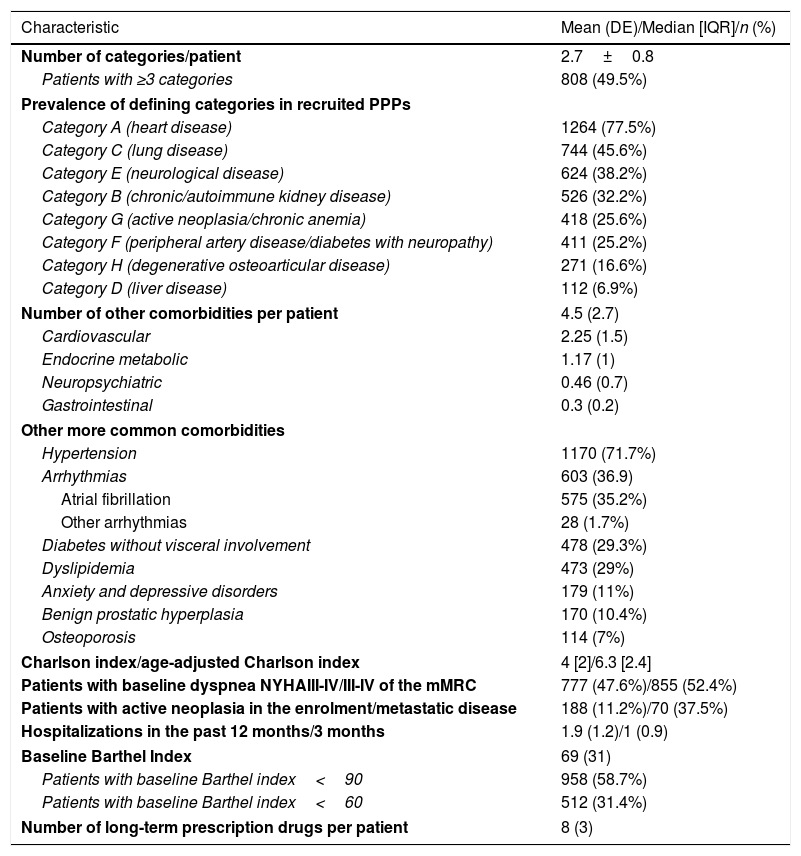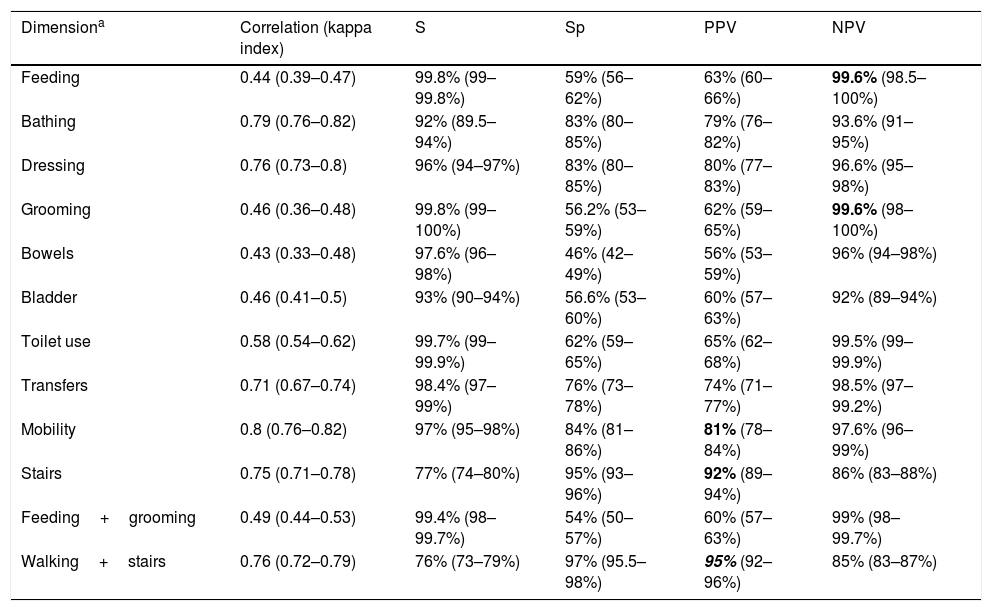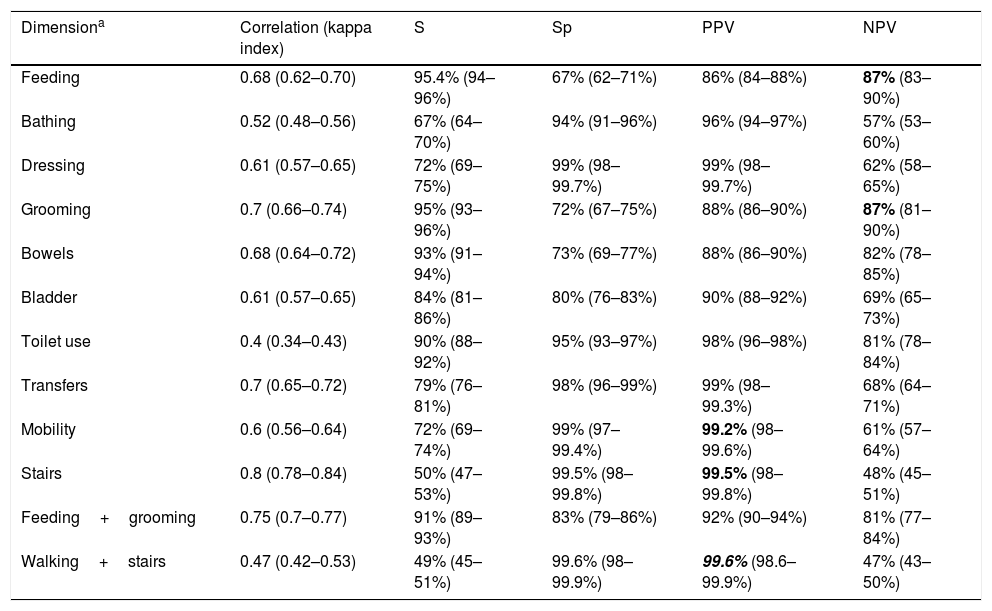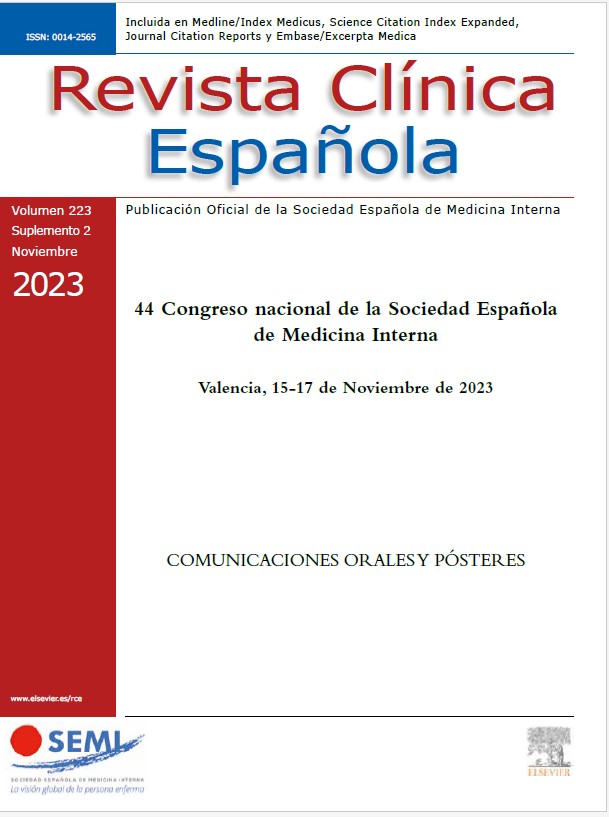To analyze the sensitivity, specificity and positive predictive (PPV) and negative predictive (NPV) values of each measure of the Barthel index (BI) compared with the full questionnaire for polypathological patients (PPPs).
MethodsMulticentre cross-sectional study. We considered 2 cut-off points for the BI (≥90 points for screening frailty and <60 points for diagnosing severe dependence). For each measure and combination of 2 measures, we calculated the sensitivity, specificity, PPV and NPV with respect to the full BI.
ResultsThe mean BI of the 1632 included PPPs (mean age, 77.9±9.8years; 53% men) was 69±31 (<90 for 58.7% and <60 for 31.4% of the patients). The “feeding” measure achieved the highest NPV, for a BI≥60 and ≥90 points (87% and 99.6%, respectively). The “walking” and “going up and down stairs” measures achieved the highest PPV, for a BI≥60 and ≥90 (99.2%/99.5% and 81%/92%), respectively. The combination of the 2 measures increased the PPV to 95% and 99.6%, respectively.
ConclusionsPPPs in hospital settings have a high rate of functional impairment. The measure for feeding achieved the highest NPV and can therefore be employed for diagnosing severe dependence. The combination of the measures for walking and going up and down stairs achieved the highest PPV and can therefore be employed to propose frailty screening for PPPs.
Analizar la sensibilidad (S), la especificidad (E) y los valores predictivos positivo (VPP) y negativo (VPN) de cada dimensión del índice de Barthel (IB) con respecto al cuestionario completo en pacientes pluripatológicos (PPP).
MétodosEstudio transversal multicéntrico. Se consideraron dos puntos de corte del IB (≥90 puntos para el cribado de fragilidad y <60 puntos para el diagnóstico de dependencia severa). Para cada dimensión y combinaciones de dos dimensiones se calcularon la S, la E, el VPP y el VPN con respecto al IB completo.
ResultadosEl IB medio de los 1.632 PPP incluidos (edad media de 77,9±9,8años, 53% varones) fue 69±31 (<90 en el 58,7% y <60 en el 31,4% de pacientes). La dimensión «alimentación» obtuvo los mayores VPN para tener un IB≥60 y ≥90 puntos (87% y 99,6%, respectivamente). Las dimensiones «deambular» y «subir y bajar escaleras» obtuvieron el mayor VPP para tener un IB≥60 y ≥90 (99,2/99,5% y 81/92%), respectivamente; la combinación de ambas preguntas aumentó el VPP al 95 y al 99,6%, respectivamente.
ConclusionesLos PPP de ámbito hospitalario presentan con elevada frecuencia deterioro funcional. La dimensión referente a alimentarse obtuvo el mayor VPN, por lo que se puede utilizar para el diagnóstico de dependencia severa, mientras que la combinación de deambular y subir y bajar escaleras obtuvo el mayor VPP, pudiendo utilizarse para plantear el cribado de fragilidad de los PPP.
Artículo
Diríjase desde aquí a la web de la >>>FESEMI<<< e inicie sesión mediante el formulario que se encuentra en la barra superior, pulsando sobre el candado.

Una vez autentificado, en la misma web de FESEMI, en el menú superior, elija la opción deseada.

>>>FESEMI<<<
Comprando el artículo el PDF del mismo podrá ser descargado
Precio 19,34 €
Comprar ahora










